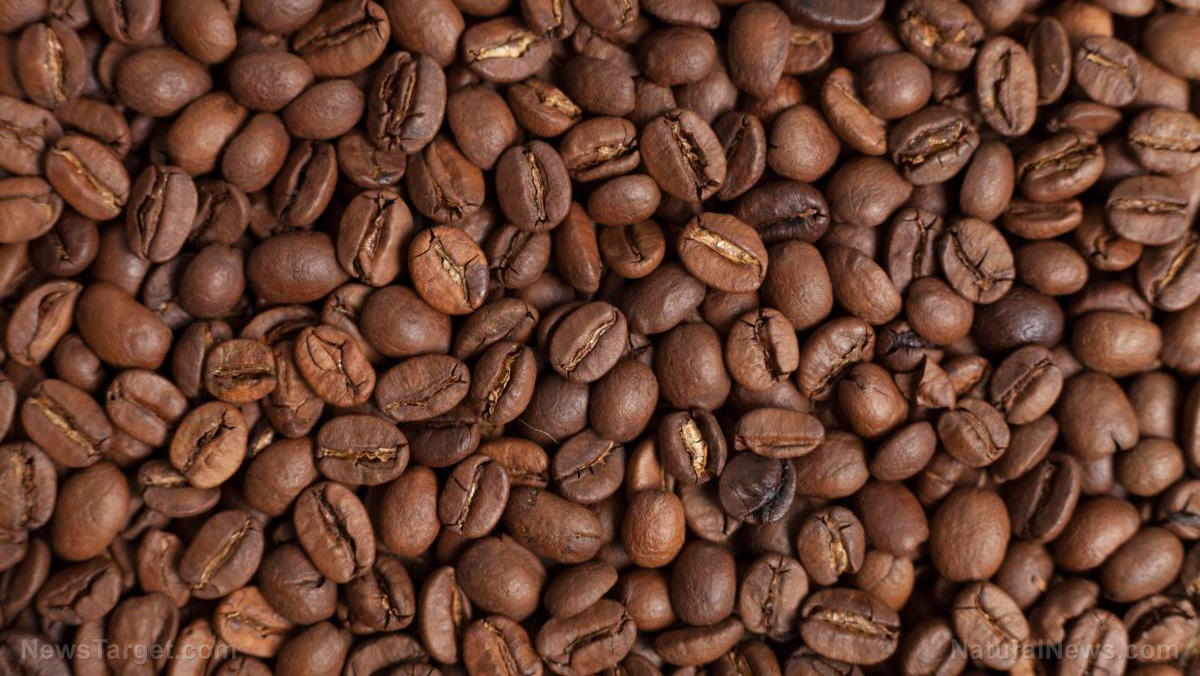Recycling spent coffee grounds: Finding new, environmentally-friendly uses for the production waste from your cup of joe
08/13/2018 / By Ralph Flores

Coffee is a drink that’s enjoyed around the world; however, it creates a lot of waste, especially with spent coffee grounds that are discarded. These grounds can still come to life and be used again, according to researchers from the Polytechnic Institute of Viseu in Portugal. The study, which was published in the Journal of International Scientific Publications, looked at the possibilities of isolating holocellulose from the by-product, to be used for products such as cellulosic pulp or type I cellulose.
To test the spent coffee grounds, the samplings were divided into three fractions. These were ground and sieved at a > 40 Mesh (> 0.425 mm), from 40 to 60 Mesh (0.425 to 0.250 mm) and 60-80 Mesh (0.250 to 0.180 mm) and < 80 Mesh (< 0.180 mm). The fractions were dried using an oven at a temperature of 100 degrees Celsius before they were tested.
The Kürscher and Hoffer method was used to isolate cellulose from coffee grounds. This was identified using X-ray diffraction. In addition, holocellulose was prepared from coffee grounds using two types of oxidative cooking: with alkaline hydrogen peroxide and with peracetic acid.
The study revealed that spent coffee grounds are a lignocellulose material, with the major component being tannins. In addition, hemicellulose and cellulose were also discovered to comprise spent coffee grounds. The cellulose derived from the coffee grounds was noted to be cellulose I (native cellulose) that had a high degree of crystallinity. The oxidative treatment of the grounds also yielded holocellulose, which is made up of cellulose and xylans.
The power of the elements: Discover Colloidal Silver Mouthwash with quality, natural ingredients like Sangre de Drago sap, black walnut hulls, menthol crystals and more. Zero artificial sweeteners, colors or alcohol. Learn more at the Health Ranger Store and help support this news site.
Researchers then concluded that cellulose could be isolated from spent coffee grounds.
Fast facts on cellulose
Cellulose, the main derivative of the spent coffee grounds, is an organic structure found in nearly all plants and even some bacteria. The compound, which is made up of carbon, hydrogen, and oxygen is the most abundant on earth, and it can be used as a natural additive. (Related: There’s wood in my food? Wood-derived ingredients common in processed food.)
Some of the uses of cellulose in food are:
- Cellulose has been used as a fiber supplement, as this increases the fiber content of the food without affecting the taste. Due to its solubility with water, it is also used to add fiber to drinks as well.
- It can also be used as a calorie reducer since it promotes satiety due to its bulk without the caloric value. This has made cellulose a popular bulking agent in diet foods.
- The gelling action of cellulose when it is mixed with water makes it a good thickening/emulsifying agent, suspending the ingredients in a solution and preventing water from spreading. It also allows more air to come in without using too much fat.
- Cellulose can be used as an anti-caking ingredient due to its ability to absorb moisture. This can be seen in products such as shredded and grated cheeses, spice mixes, and powdered drink mixes.
When consumed, cellulose promotes the movement of food through the intestines. This prevents constipation and allows regular bowel movements.
All plant-based foods such as fruits, vegetables, grains, beans, nuts, and seeds contain cellulose. To get the most out of it, consume whole fruit varieties instead of juices — as they do not have any cellulose.
Learn more scientific breakthroughs on coffee and cellulose by following Science.news today.
Sources include:
Tagged Under: agriculture, Chemical composition, coffee grounds, Composting, holocellulose, Kitchen, Liquefaction, natural ingredients, Organic Fertilizer, recycling, reducing food waste, spent coffee ground




















